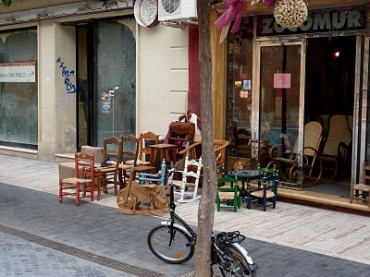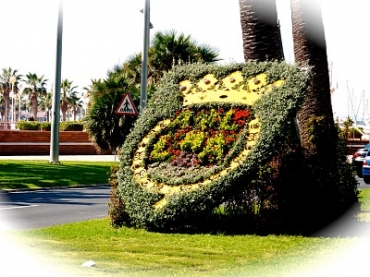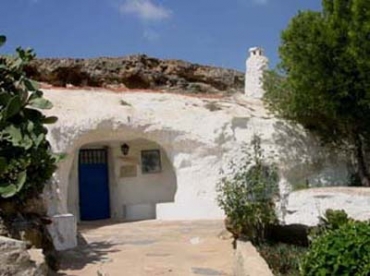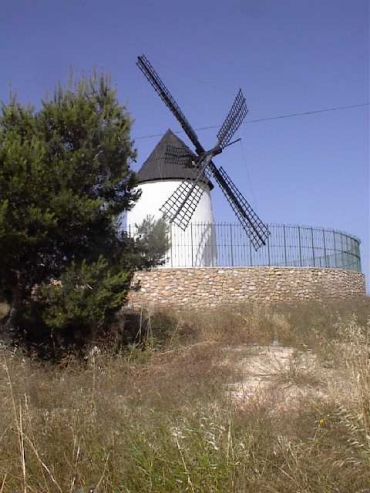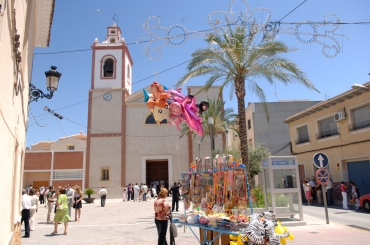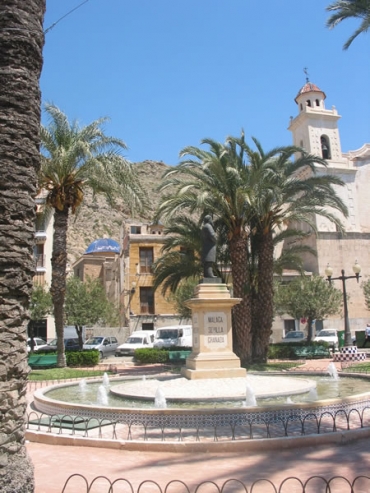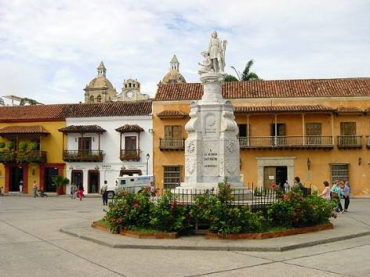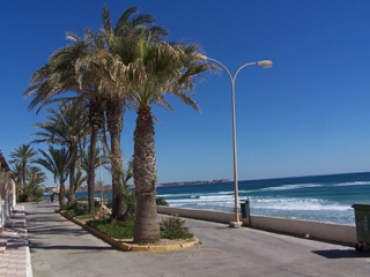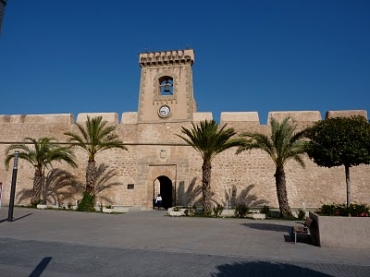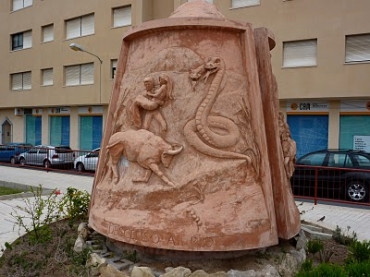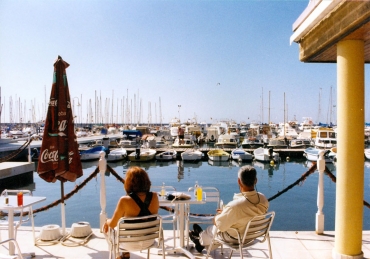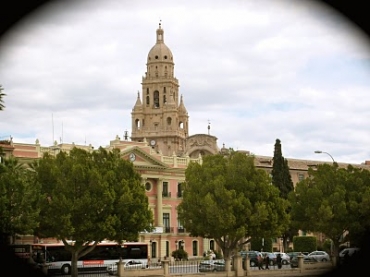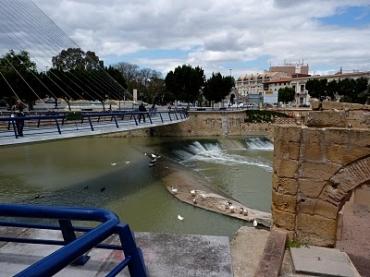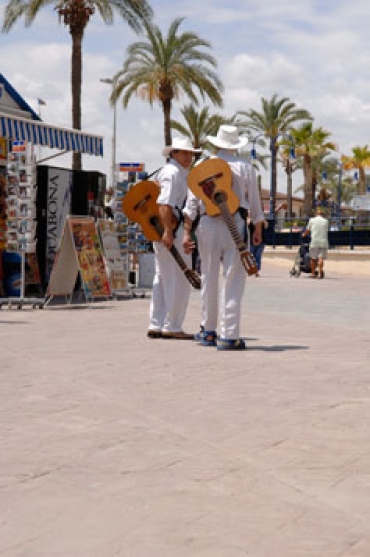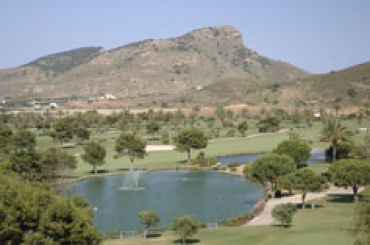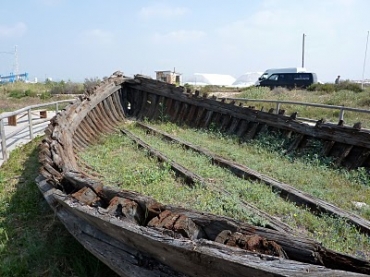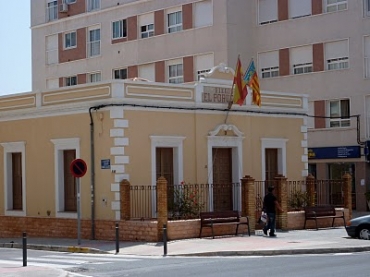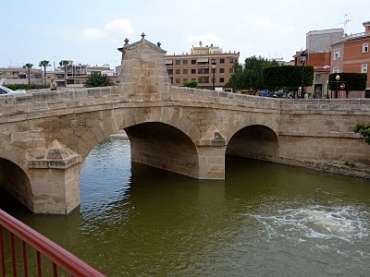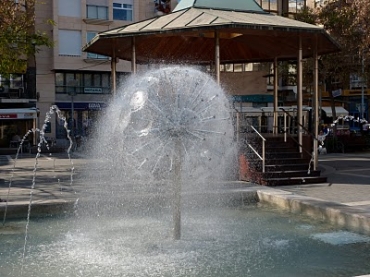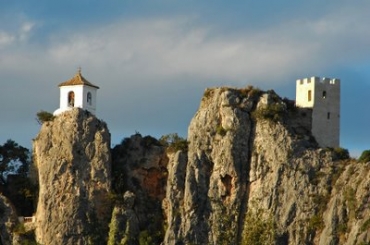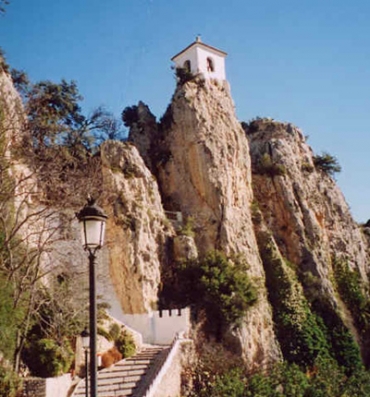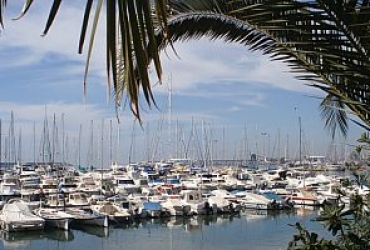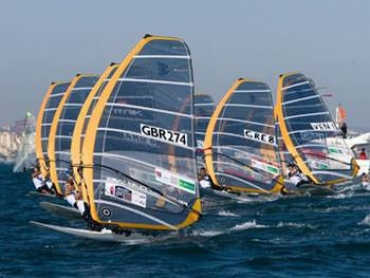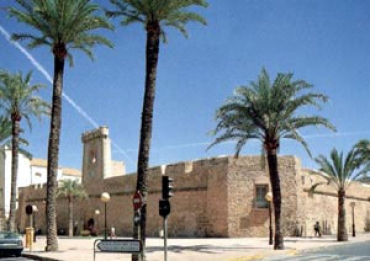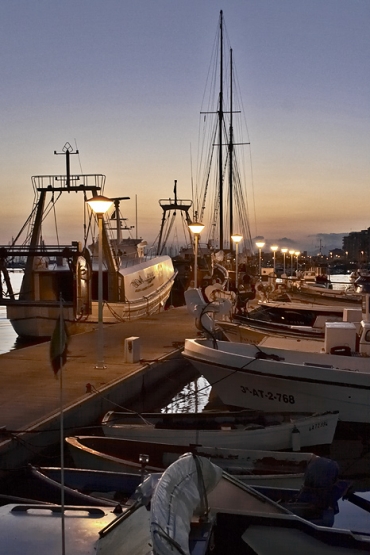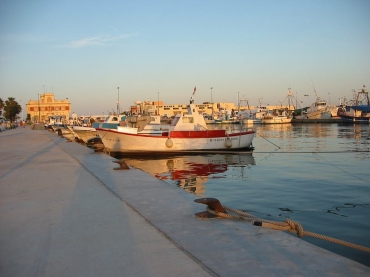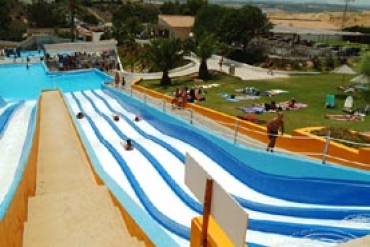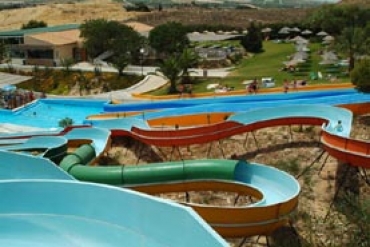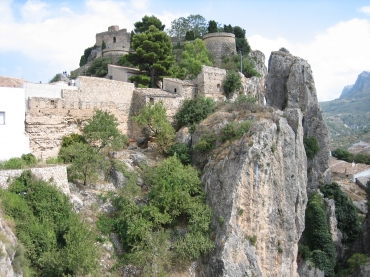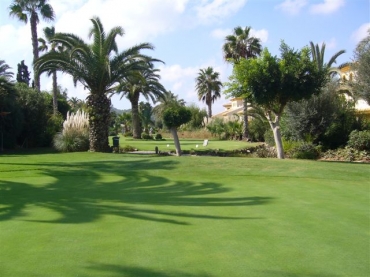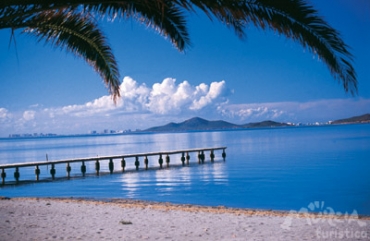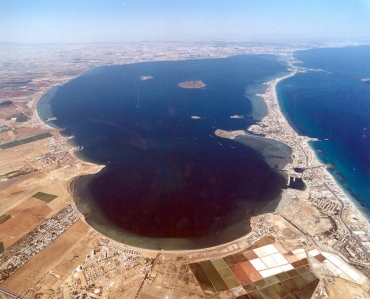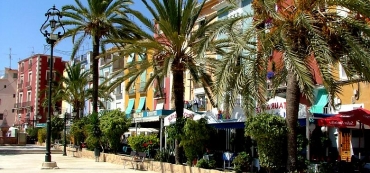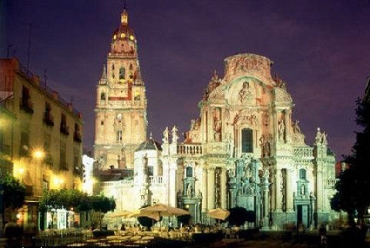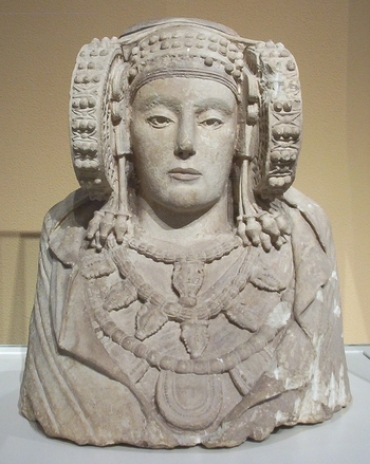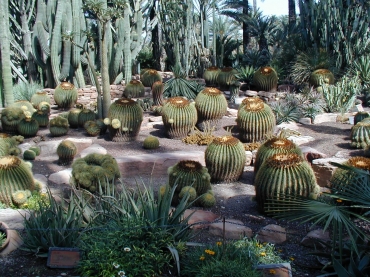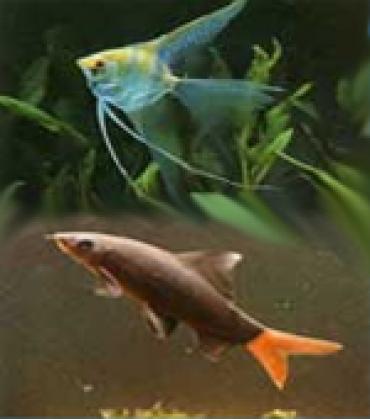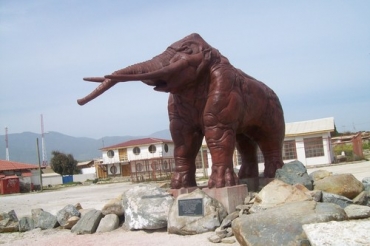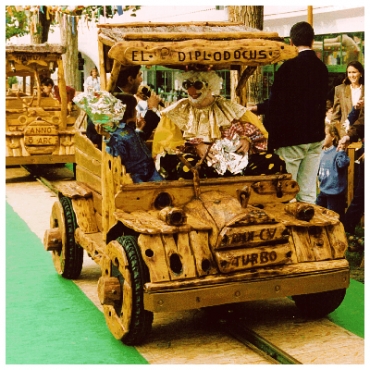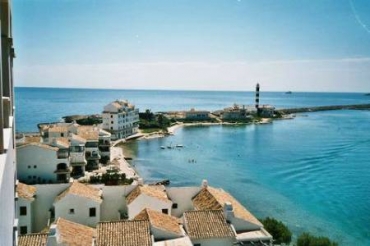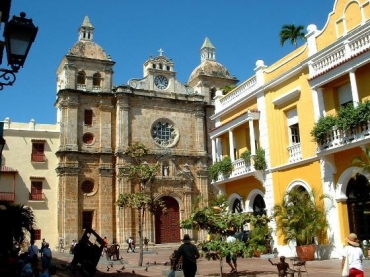Places to Visit
Guardamar Del Segura is very close to the cosmopolitan towns of Alicante, Elche, Murcia and Torrevieja.
You don't need to hire a car during your holiday in the Puerto Pinar apartments as the bus station is also within 10 minutes walking distance where there are buses which will take you to every corner of the Coast Blanca.
The local travel agent in Guardamar also runs a bus to major attractions like Torrevieja' s magnificent water park, Benidorm Terra Mitica Benidorm Palace at an excellent price. In Alicante there is a massive store called El Corte Ingls where you can buy anything! Also set in the heart of the Costa Blanca and close by is Elche. This town is famous for its shipment of palm trees all around the word. It is also famous for its leather goods and has a factory which sells hundreds of fashionable discounted footwear!
Santa Pola...located just north of La Marina, Santa Pola has long been a fishing town and its fishing harbour is one of the largest in the Mediterranean. In addition to the fishing harbour is a sports marina. The town has several beaches, including over 4km of fine sand & crystalline water. The beaches are well maintained & facilities present have been recently upgraded, with wheelchair access/facilities, to floating platforms, numerous water sports, lifeguard stations & regular police patrols.
On one side of the main square is a magnificent 16th century castle. Immaculately preserved it now houses a small museum.
This park provides fun for young and old in a family atmosphere. Entry to the park is free and you can walk around on well-paved, well-lit streets and simply enjoy the gardens. There are more than 20 different attractions in the park, including bouncy castles, rides through the park, a boating lake, the laser labyrinth, scary rides, a games arcade, a 60m high tower from which there is an excellent panorama, and the new tropical garden mini golf. There are also restaurants, sandwich shops, hamburger joints, ice-cream parlours, waffle stands and a western-style restaurant that can hold up to 300 diners.
ACUARIO MUNICIPAL is the Municipal Aquarium of Santa Pola has used it’s facilities to show part of the fauna of the Mediterranean Sea and it is an important and interesting educative tool, which allows us to see the depths of the sea with an aim to entertain, inform and make the visitor aware of the need for it’s conservation. There are many different sea creatures to be seen including turtles, groupers, morays, sea-bass, etc.
Torrevieja...short drive from Guardamar is Torrevieja, The City of Salt is primarily a tourist resort, but it's also a vibrant working town. The salt it extracts from the La Manta and Torrevieja salt flats now listed as a nature park dominates its history.
The Torrevieja salt flats have a perimeter of 15 miles and are connected to the La manta lagoon. From the lagoon, the Acequin canal runs to the sea. Salt has been mined here since the middle ages, although the area saw its greatest glory during the 19th century. Salt from the lake is exported worldwide and production now exceeds a million tonnes a year.
Today in Torrevieja are residential estates which have been sympathetically on the surround hills, but the salt flats have been preserved as parkland and is the home nesting area for thousands of flamingos. Visitors to the park include those who come to take mud baths reputed to have therapeutic value for skin conditions and aching joints.
Torrevieja means 'old tower' in Spanish and the basic attractions are sun, sand and salt. The redevelopment of the esplanade and the Port of Torrejar area has proven to be an enjoyable tourist attraction and the town has a large number of independent shops providing some interesting browsing and subsequent purchases.The town has a number of excellent beaches, Los Locos, El Cura and Los Naufragos; all have been awarded the coveted European Blue Flag standard for cleanliness and water quality.
Torrevieja's distinctive low-level houses and wide streets are a feature of its rebuilding following an earthquake although older buildings do remain including the remains of a Roman fort. With its beaches, sports facilities, restaurants, summer nightlife, port, promenade and all year around funfair it is a popular holiday destination, particularly with the Spanish themselves. Spanish music fans flock here in August for the Habanera festival - a celebration of the lilting music brought to the town by Cuban salt exporters in the 19th century.
La Manga and the Mar Menor...drive a little further from Guardamar and you will find the Mar Menor is separated from the Mediterranean from a thin strip of land about 13 miles long known as La Manga. This in turn has the effect of turning the Mar Menor into a large swimming pool with warm calm waters that rarely drop below 18 degrees centigrade, even in winter. This is where people come to play and there are a wide variety of water sports on offer from diving to sailing and windsurfing as well as massive stretches of fine white sand for the more sedentary sun worshipper.
Elche (Elx)...is well worth a visit while staying in Guardamar...its a former Roman colony, Elche boasts the largest palm grove in Europe with over 300,000 palm trees in and around the city, which are protected by law. Visitors will want to concentrate their attentions on the old town, which has plenty of interesting museums and historical buildings to dip in and out of and a myriad of palm tree shaded squares. Elche's main sites are crowded around the baroque basilica of Sante Maria whose blue tiled dome dominates the town centre. Elche town, with its 200, 00 inhabitants, is situated inland approximately 16 miles from Alicante. Elche is famous for its palm trees and in El Palmeral Park (The Park of the Palms) has some 600 species and over 200,000 specimens, one for each of the inhabitants. These palms are cultivated and exported around the world. Even on the hottest days, with the overhead fonds to keep you cool, a stroll through the park is a very pleasant experience indeed. At the centre of the park is a cafeteria and restaurant where you can enjoy a cool drink or a meal (see things to do).
The MUSEUM OF ARCHAEOLOGY and the MUSEAUM AT L'ALCUDIA are located on the site where the extraordinary 'Dame of Elche' was found. Elche is also the largest shoe producer in Spain exporting to a number of the worlds top stores (seek out some bargains locally) and also has its own university teaching Medicine, Law, Marketing and Public Relations amongst its courses.
SAFARI PARK is situated a few miles from Elche, which has many exotic animals. Orihuela. The river Segura which runs along the side of the apartments in Guardamar were once the capital of the area. Orihuela today is a historical inland town, largely untouched by tourism where the streets are lined with orange trees and shady squares are fringed with ornate palacios and crumbling facades. The elegant churches and buildings bear witness to the town's rich heritage as an affluent university and cathedral city, before Alicante usurped its position as regional capital in the 19th century making it a pleasant place to soak up both sun and culture.
Villajoyosa...means "joyful or happy town", this popular Costa Blanca city is situated at the mouth of the River Sella and is the main town of the La Marina region. The town is much older than Benidorm and the locals say that it is close enough to Benidorm whilst being far enough away! In the area you will find olive, carob and almond trees, as well as a number of palms, pines and prickly pears. The area once had a considerable number of vines, but these have largely been replaced by tomato plantations.
As with many of the east coast towns, villajoyosa suffered from attacks by the Barbary Coast Pirates. According to legend and possibly a little history, on the 29th of July 1538 36 boats carrying Algerians arrived to ransack the town but the inhabitants were able to fight them off thanks to the intercession of Saint Martha. Since that day, she has been the towns Patron Saint a fact which is commemorated with the regular re-enactment of the landing of the Moors.
As well as tourism, Villajoyosa is the home of fishermen and chocolate-makers, a strange combination but both of which are deeply rooted in the City's history. The original and older part of town has been declared an historic monument. There are still various bridges remaining from the time of the Romans. The church of Villajoyosa is a Gothic building with renaissance doorways, although these have been somewhat changed by Neo-classical alterations carried out in the 18th century.
If history does not interest you then the beaches certainly will, they are typical of the sort of beaches you would expect from the Costa Blanca. Villajoyosa has a vivid daily fish market that is worth a visit especially during summer starting at about 5pm. In addition to the sometimes crowded fish market, Villajoyosa's old town centre and it's promenade invite visitors to relax and have a nice coffee or a meal in one of the restaurants and bars around.
Cartagena...was founded in the year 227BC by the Carthaginians and at that time was called Cartago Nova (new Carthage). It rapidly became their main trading port, and at one time was widely recognised as being one of the wealthiest cities in the ancient world.
Cartagena was made truly famous by the 2nd Punic war (218-201BC) which led to the landing of Hannibal and his elephants who came with the intention of defeating the Romans. In fact he got silver from the mines there to carry on the war effort. Cartagena has through it's history been controlled by the Romans, the Visigoths and in 711 the Moors took control of Cartagena and much of the peninsula. Under Muslim rule it lost some of it's status as the Moors chose the newly founded city of Mursiya (Murcia) as the regions capital.
Cartagena continued it's strategic importance during the time of Philip II of Spain when it was made Spain's official naval headquarters. It also remained the principal trading port for the country until the 20th century, when it suffered by competition brought on by the rival ports of Barcelona, Valencia and Malaga.
These days Cartagena is still sustained by its role as a seaport. Industrial development is clearly evident, but the city still remains an attractive destination, with much to offer in its old quarter, and the newer parts alike. Cartagena is well worth a visit if you are interested in Maritime history, or ancient history. It has a beautiful harbour with plush gardens overlooking this and many ancient monuments such as an amphitheatre.
Most of the sights in Cartagena can be seen on foot. There are museums to visit, and several parks and squares to stop and rest in. Stop in one of the many restaurants or cafes and sample the local cuisine. If you enjoy shopping then it may be worth visiting Cartagena which now boasts an array of fashion boutiques as well as large department stores such as El Corte Ingles.
Orihuela...human settlements in the area of Orihuela can be traced back as far as the second half of the third millennium BC. In the 8th century Orihuela was an independent capital extending over the provinces of what are now now Alicante and Murcia. At this time it was the seat of the dukedom of Teodomiro, a Christian ruler who enjoyed an autonomy pact with the Moors following the Islamic conquest. It's status of capital was diminished when Alicante took over as the regional capital.
Orihuela has gained a certain amount of fame from being the birthplace of Miguel Hernandez, a radical poet and shepherd who died in prison after the Civil War. You can visit his birthplace in Calle Miguel Hernandez which is open every day between 10am - 2pm and 4pm to 7pm. Other noteworthy men from Orihuela include the painter Joaquín Agrasot, the cardinal Desprades (first Apostolic Nuncio) and the archbishop Loaces amongst others.
It also served as the geographical inspiration for the novels of Alicante born Gabriel Miró (1897 - 1930), Nuestro Padre San Daniel ("Our Father, Saint Daniel") and El Obispo Leproso ("The Leprous Bishop").
There are many sights to see in Orihuela from the Cathedral and museum to the Colegio de Santo Domingo (an old convent and university) to the underground Museo de la Murailla. The town possesses five national monuments including 'The temptation of Saint Thomas Aquinas' by Velázquez, the statutes of the Sacred Family by Salzillo, and the 'Diablesa' by Bussy.
The Segura River provides boundaries to the city and is the source of the rich 'huerta' (irrigated land) of the Bajo Segura. Today the river marks the border between the old city and the newer commercial centre, which originated in 1884 with the construction of a railway station linking Orihuela with Murcia, the city with which Orihuela is closely joined via its economy and the Segura River.
Orihuela includes the second largest palm forest of the Alicante region as well as three golf courses, 16 km of town beaches including La Zenia and Dehesa de Campoamor. A walk through Orihuela should not be hurried. Most of Orihuela's glorious architecture can be traced back to either the late gothic, the Renaissance or the Baroque periods. The Cathedral of San Salvador whose museum contains the Velázquez painting is worth a visit.
Also take the time to visit the two most typical churches of Orihuela, the gothic Santas Justa and Rufina with gargoyles and a tower and Santiago (St James). The latter contains the status of the Sacred Family by Salzillo and is the place where the Catholic Monarchs convened a general parliament (Cortes) in 1488 for the purpose of gathering funds to finance a military sortie that would culminate in the seizing of Granada in 1492.
Benidorm...is a massive tourist resort with many beaches, theme park and water parks. Approximately one hour's drive from Algorfa.
TERRA MITICA As you approach the Park the first things you notice are the 'Magnus Colossus' (a sort of run away train) and the large 'Terra Mitica' sign that is carved into the mountain behind the park. Unlike some parks (like 'Alton Towers' which is spaced out so it looks bigger), 'Terra Mitica' has excellent layout so you aren't likely to miss anything out as it is set out so you sort of follow a trial taking you through everything. The rides aren't just one after another, there'll be a ride, then a restaurant or show place, then maybe some sort of game area (see things to do).
MUNDOMAR is an attraction with marine animals and exotic birds. You can explore the various areas of the park and enjoy shows with parrots, sea lions and dolphins or see the sub-aquatic world of sea-mammals. There is also a self-service snack restaurant and shops.
AQUALANDIA - Perhaps the biggest Water Park in Europe with quiet swimming pools and exciting water slides, for the enjoyment of all the family. With restaurants, shops, etc.
Guadalest...a lovely day out, located about 25 km inland from Benidorm – approx 1½ hour drive from Algorfa. It enjoys one of the most spectacular locations of any village in Spain, set high up on a pinnacle and carved out of a mountain top in the midst of stunning scenery. It has a population of only 200 but is one of the most popular tourist attractions in Spain. The only way to reach the top of Guadalest is via a small path leading up the cliff. Since the castle of Guadalest is very picturesque, you might discover it on several postcards. From the castle, you can enjoy a fantastic view of the village, the valley and the reservoir. In the village there are souvenir shops next to the medieval houses, which are partially integrated into the rock. There are museums where a wide variety of dresses, kitchen and household implements, farming tools and other objects from the 16th until the 20th century are exhibited. There is also a Toy Museum.
Rojalas...there are plenty of shops and supermarkets catering to the needs of expatriates. Amenities include a 24 hour filling station, an internet café and an international pub. Rojales holds a market every Thursday. There is also an Aqua Park in Quesada de Rojales which is open during the summer months. It has 4 gentle water slides plus 2 kamikaze, 3 children’s pools, a large swimming pool with free sun beds and parasols, restaurant, cafeteria, lawn area, picnic area, lots of parking, etc.
Island of Tabarca...catch a boat from Guardamar marina to the island of Tabarca, the main island of a small archipelago, which was fortified for Genoese prisoners in the 18th century. The walled town looks rather like a grandiose folly with the unfinished church and entrance arch ridiculously oversized in comparison to the squat fishing shacks and dusty roads. A walk around the island takes about 90 minutes and you will see the old lighthouse and a solar station that generates the islands electricity. The island only has around 100 residents who live a kind of double life according to the season - in winter they work on the fishing boats and in summer in the beach restaurants. Ecologists consider the marine reserve surrounding the island to be a model of its type and many visitors come to enjoy the snorkelling or sub-aqua diving in its protected waters.
